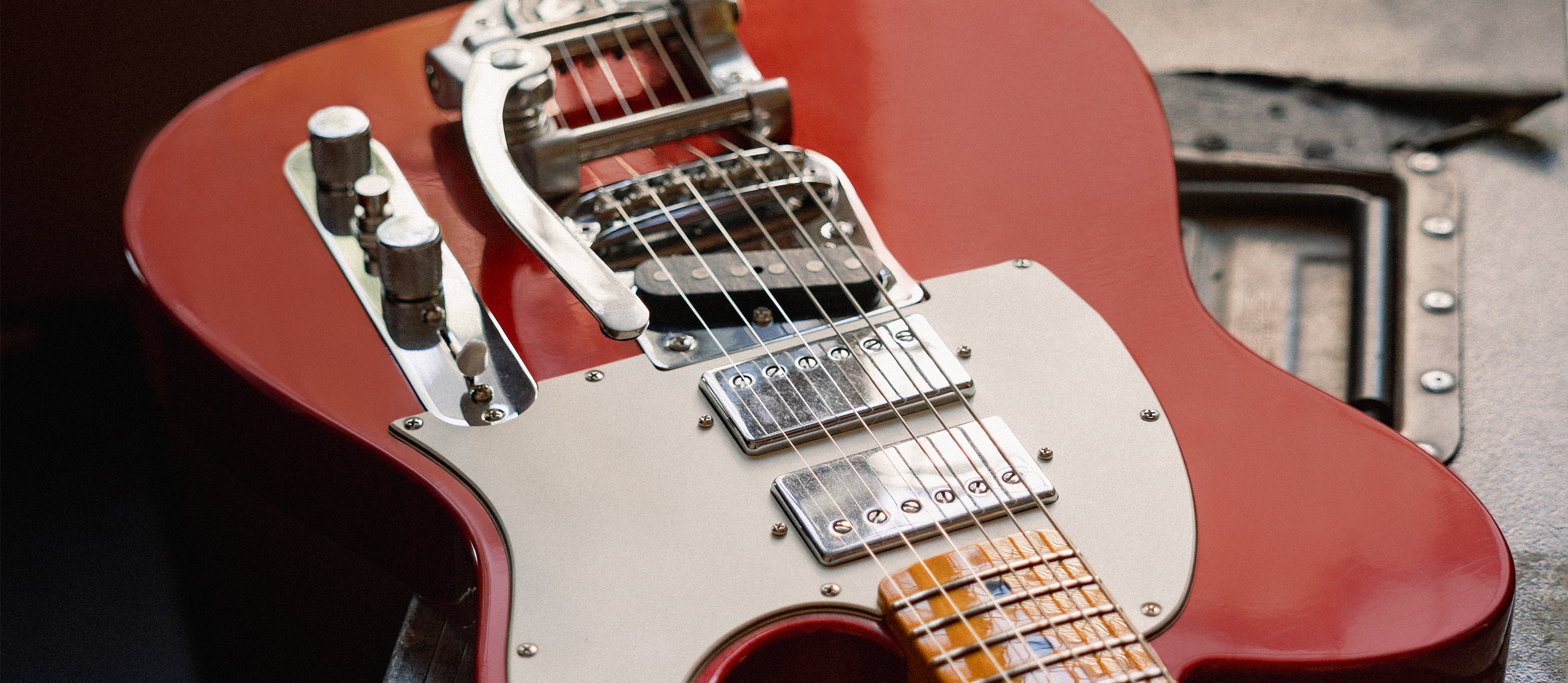Leap Between Blues and Bebop Jazz with this Jump Blues Guitar Lesson
Explore this exciting subgenre with extended musical examples inspired by the great Clarence “Gatemouth” Brown, Duke Robillard and Ronnie Earl.
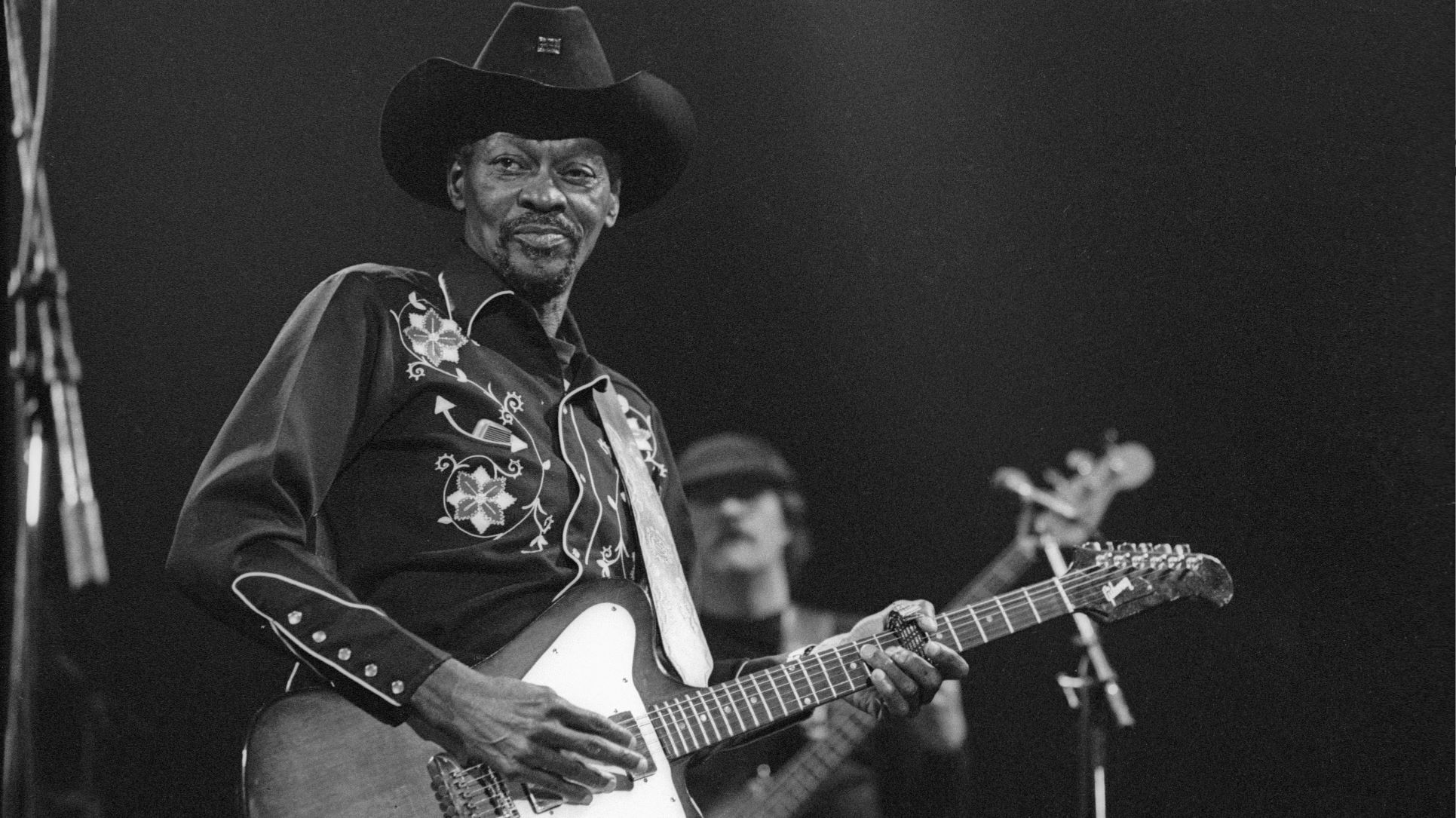
*** We recommend bookmarking this page for easy reference ***
An uptempo hybrid of blues and bebop jazz, jump blues directly preceded the rock and roll explosion of the 1950s. Rhythmically, the style is closer to rock and roll than either of these foundational genres, with a strong backbeat groove, but there’s more to playing jump blues than minor pentatonic riffing.
Above and beyond note and chord choices, which can range from simple “box”-pattern licks and stock dominant-seventh and -ninth chord “grips” to sophisticated melodic lines and jazzy voicings, the key to sounding authentic in the jump-blues style lies in controlling your swing and even, or “straight,” eighth-note phrasing at swift tempos.
In this first installment of our two-part lesson on this exciting style, we present a trio of extended musical examples inspired by the playing of three of its great practitioners – Clarence “Gatemouth” Brown, Duke Robillard and Ronnie Earl – each of which highlights elements of the individual player’s signature style and techniques.
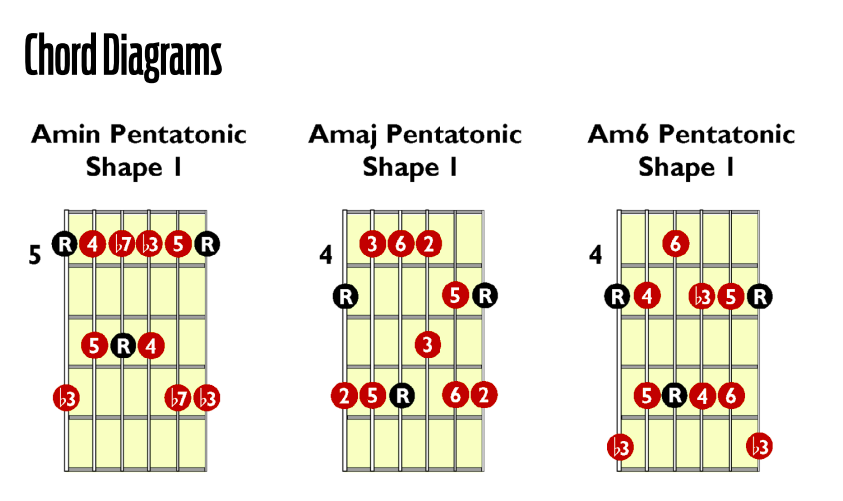
TECHNIQUE FOCUS: SCALE CHOICES
Many jump blues guitarists also play jazz and are often inclined to approach blues changes with a wider range of harmonic tools. You’ll need to ensure that you can switch effortlessly between parallel major and minor pentatonic scales (built from the same root note), ideally both in shape 1.
This will enable you to better acknowledge the tonality of the IV chord of the blues and play phrases across the changes and bar lines. You should also experiment with the minor-six pentatonic and the corresponding Mixolydian modes for the I, IV and V chords. Also, don’t forget the importance of outlining chord tones with arpeggios, as this too is a very effective melody-building approach.
Clarence “Gatemouth” Brown
Clarence “Gatemouth” Brown was proficient in a wide range of styles including blues guitar, country, jazz and Cajun music. A gifted multi-instrumentalist (he also played fiddle, drums, harmonica and mandolin), Brown had a guitar style that was rhythmic and fluid, with controlled phrasing, and often featured straight eighths over a swing groove, which creates an interesting musical tension. He frequently interspersed his single-note lines with chord riffs using open-voiced inversions on the lower strings, a technique demonstrated in Ex. 1.
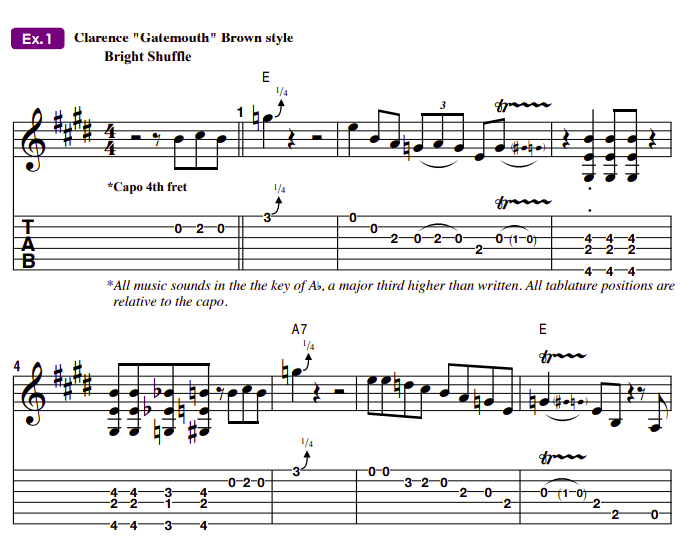
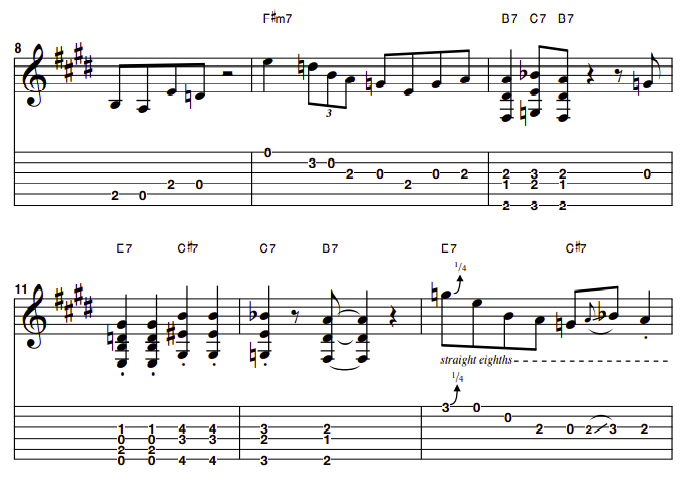
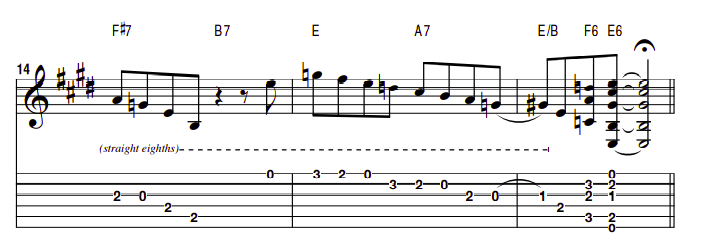
Brown used a capo when playing in any key other than E (major), placing it as high as the 11th fret. This allowed him to perform slurs and trills involving “open” strings that would otherwise be awkward, if not impossible, to play. For this example, place your capo at the 4th fret, which will put you in the concert key of Ab.
Duke Robillard
Our next artist, Duke Robillard, is a former member of the Fabulous Thunderbirds and co-founder of the swing revival big band Roomful of Blues. His huge back catalog of solo work includes tribute albums honoring T-Bone Walker and Les Paul.
The T-Bone influence – which features double-stop phrasing, quarter-step bends from the minor third and impeccable timing – is clearly demonstrated in the key of A in Ex. 2, from its opening quarter-step bend on C over the A7 chord to the frequent use of double-stop phrasing and chromatic “approach notes.”


Notice how the ninth, B, is added to the A minor pentatonic (A C D E G) line in bar 13 to describe the underlying E7 chord more effectively. The G note on the B string’s eighth fret is also decorated with a quarter-step bend, implying the major third of the chord, G# , in a very bluesy way.
Ronnie Earl
Like Robillard, Ronnie Earl is a former member of Roomful of Blues, but he’s known best for his work with his own band, the Broadcasters. Played in the key of G, Ex. 3 demonstrates Earl’s signature style, featuring jazzy chord riffing with lots of chromatic half-step shifts (or approach chords), flawless phrasing and the substitution of the major sixth for the minor, or “flatted,” seventh of the minor pentatonic scale when playing over the IV chord, which pleasingly acknowledges that chord’s major third.
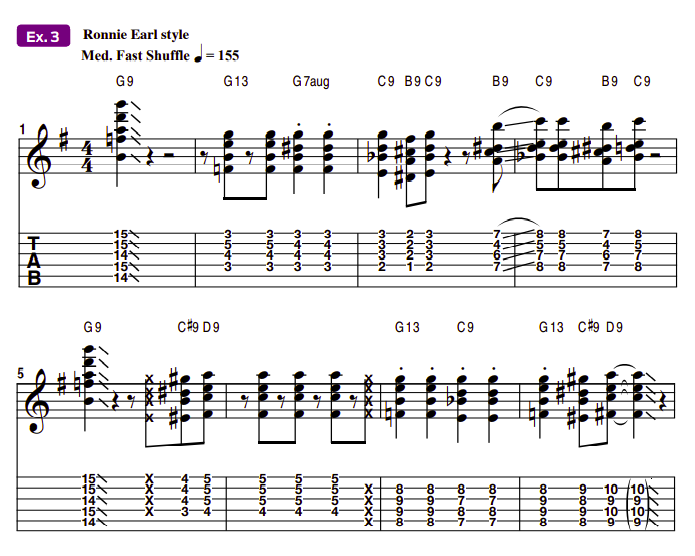
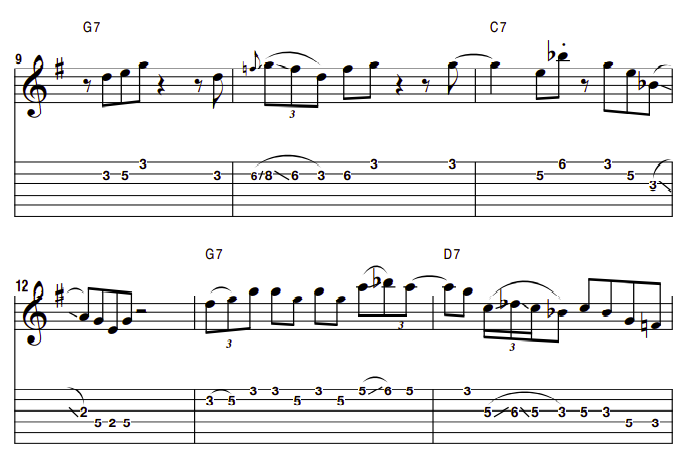

This scale is sometimes referred to as “minor-six pentatonic” because it relates to a minor six (m6) chord (a minor triad with a major sixth added) in the same way that minor pentatonic relates to a minor seven chord. The G minor-six pentatonic scale is spelled G Bb C D E, or, intervallically, 1 b3 4 5 6.
The first chorus of this solo opens with some cool. punchy chord comping, which adds depth to the standard eight-bar blues progression upon which this 16-bar example is based and emulates the powerful sound of a tightly arranged big-band horn section. Note the use of the altered-dominant chord G7aug (also known as G7# 5) in bar 2, which intensifies the “push” to the IV chord, C9, in bar 3.
The second chorus of the solo, beginning in bar 9, features single-note lines that are bluesy and also closely follow and acknowledge the underlying chord changes. Notice how the use of the aforementioned G minor-six pentatonic scale in bars 11 and 12 nicely outlines the IV chord, C7, with the E note now being heard as that chord’s major third.
Get The Pick Newsletter
All the latest guitar news, interviews, lessons, reviews, deals and more, direct to your inbox!
“Write for five minutes a day. I mean, who can’t manage that?” Mike Stern's top five guitar tips include one simple fix to help you develop your personal guitar style
"It’s like you’re making a statement. And you never know where it’ll lead." Pete Thorn shares the tip that convinced Joe Satriani he was the right guitarist for the SatchVai Band










